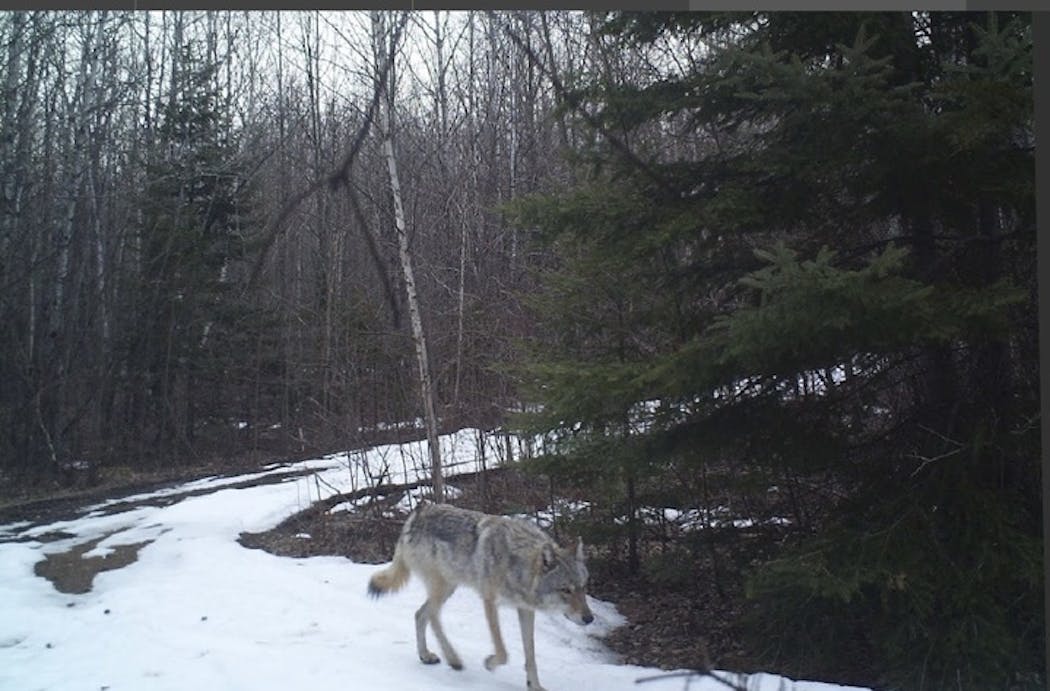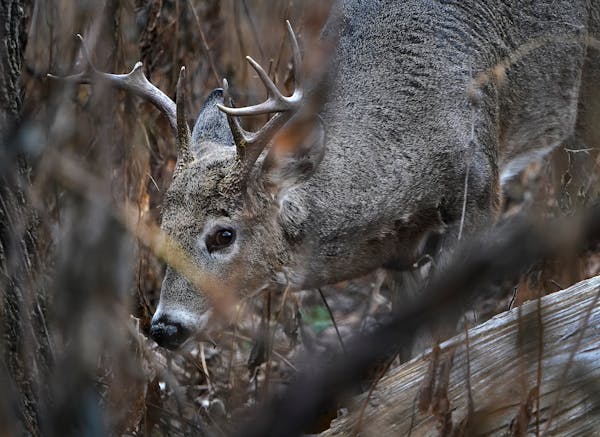Derek Banovetz is 39 years old, grew up in Ely and has been hunting deer not far from that northeast Minnesota town since he was a kid.
"Years ago, we'd drive into town to get something to eat on opening weekend of deer season and the bars and restaurants were packed," Banovetz said. "This year, we went into town on opening weekend and no one was there."
Banovetz knows why Ely was a relative ghost town.
"My wife, Dana, and I hunted the season's first week out of a shack we've hunted the past 20 years," Banovetz said. "Not only didn't we see a deer, we didn't see a deer track. Only wolf tracks."
The story is the same throughout the northeast.
Craig Sterle's deer-hunting outpost has been in his family almost 100 years. Located about 30 miles north of Duluth, the camp has been subjected to a lot of tough winters, yet over time it has produced plenty of deer, including some good bucks.
No more.
"This fall, we had four or five guys hunt opening weekend through the first week of the season," said Sterle, a retired Department of Natural Resources forester. "During that time, they saw no deer, only two sets of tracks. For my part, I didn't even leave the shack. If I saw a deer, it would be like shooting the last buffalo."
DNR conservation officer Troy Fondie has patrolled the region around Orr for 21 years.
"On opening weekend this year, I saw the fewest deer hunters I've encountered in my career," he said. "Some camps I've checked in previous years just aren't there anymore."
One problem is demographics, Fondie said, noting the continuing graying out of baby-boomer hunters.
"But the real issue is a lack of deer," he said. "Over the summer, I drive around and I just don't see deer. We don't even get car-killed deer reports."
Severe as the past two winters in the northeast were, with deep snow and prolonged cold, the region is accustomed to deer-killing cold spells. In January 1977, for example, at the garage-turned-cabin where I lived on Garden Lake outside of Ely, the mercury sank to 30 below on a handful of nights, and 40 below once or twice.
Still, during hunting seasons before and after that winter, we saw and shot deer.
DNR brass will tell you the northeast deer problem is the result of a perfect storm, blaming bad winters, an aging forest and oh, yes, wolves.
That order should be reversed, because wolves are now the biggest threat to deer in the northeast — that and lack of a coordinated effort by the DNR to address the problem, or even concede it's a problem worth addressing.
For 43 years, Jeff Bishop of Grand Rapids has lugged the same Remington Model 722 chambered for .257 Roberts into the country surrounding Effie and Togo in northern Itasca County.
"My buddies and I are all-day sitters," he said. "We're in our stands before daylight and stay until dark. If I died in my stand that would OK by me. That's how much I enjoy being in the woods."
Like most northeast deer hunters, many of whom live in the Twin Cities, Bishop has nothing against wolves. But the ratio of wolves to deer, he said, is out of whack.
"When I first hunted up here, opening weekend was like a war zone, shot after shot, there were so many deer," he said. "This year, my partner and I and [his wife] hunted opening day through Friday. We saw one doe. You see the joke TV reports from the Voyageurs Wolf Project near International Falls that wolves move on when they don't have deer to eat? No they don't. Just check our trail cameras."
Bill Cromell hunts not far from where he lives, near the border of Itasca and Koochiching counties.
"This fall, in seven days of hunting, I've seen the same doe twice," he said. "That's it."
In Greaney Township, southwest of Orr, Dennis Udovich's family has logged and hunted for more than 100 years. Too many wolves are one problem, he said. "But people around here will tolerate wolves if they're managed," he said.
Another problem for deer, Udovich said, is that DNR logging contracts in the northeast are too big, and fail to create habitat that deer rely on for survival.
"Northeast Minnesota has some of the best wildlife managers in the world. They know what to do, if only they were allowed to do their jobs," he said.
If something doesn't change to give these and other hunters hope, and northeast whitetails a break, it's widely acknowledged the region's hunting-license decline, already precipitous, will cascade.
Said Bishop: "My buddies and I are going to stop buying licenses. Why give the DNR $34 for nothing?"
To prevent that, or at least mitigate the problem, the DNR should:
• Form a Northeast Deer Management Committee headed by local wildlife managers in coordination with northeast hunters, tribal authorities and others to explore ways to increase regional deer numbers.
• Acknowledge that moose and deer can inhabit the region collaboratively, as they have.
• Acknowledge that without managed wolf hunting and trapping seasons — assuming the feds allow them again someday — neither deer nor moose will fully recover in the northeast.
• Change all deer hunts in the northeast, including youth and archery, to bucks only until the region's deer rebound.
• Advocate and practice wildlife-friendly logging in the northeast. The replanting of St. Louis County clear cuts with monocultural pine forests, for example, as currently happens, should be discouraged in favor of smaller cuts that create aspen-birch-spruce successions replete with forest edges that deer, grouse and other critters prefer.
None of this is difficult. All it takes is minimal effort, accompanied by a much-needed — and to date totally absent — sense of urgency by those assigned to manage the state's natural resources.
Including northeast Minnesota deer.

Anderson: Building a new Waterville fish hatchery will help shorten the time between bites

Anderson: Trailblazing sonar will be in thousands of boats for opener

Anderson: Celebrate Earth Day by rekindling real connection to nature
Anderson: Anglers protesting tough new Mille Lacs rules are wrong





